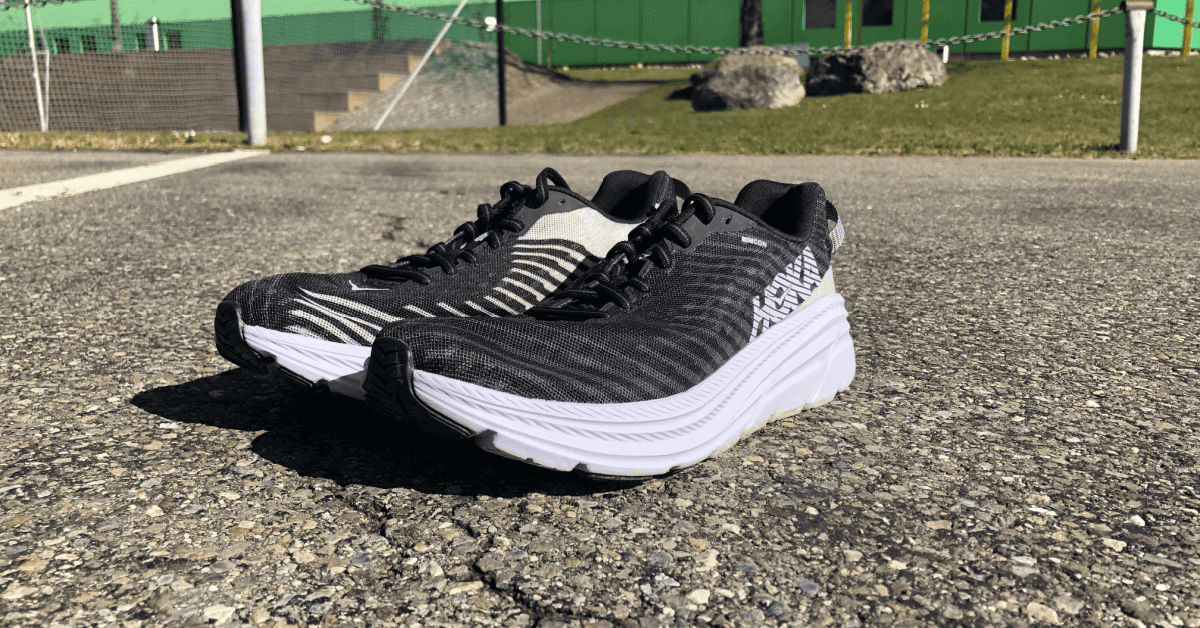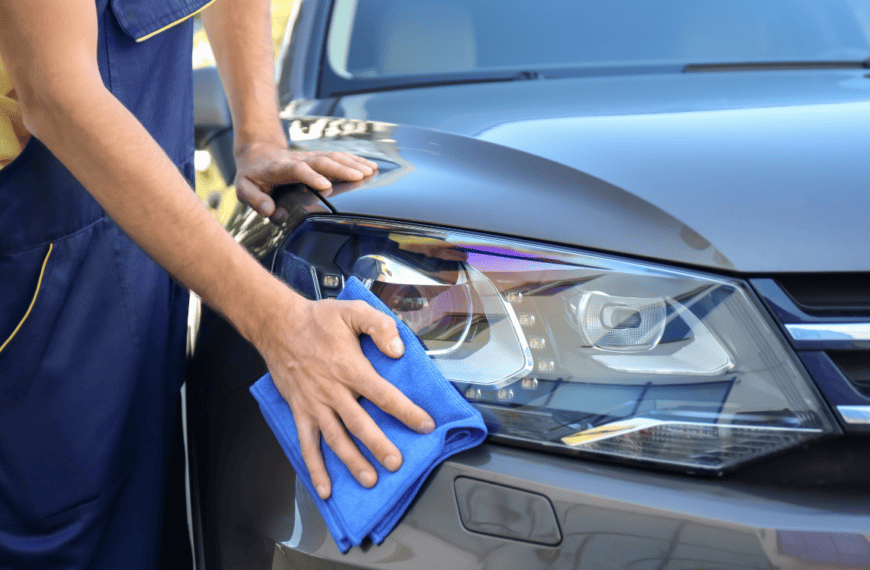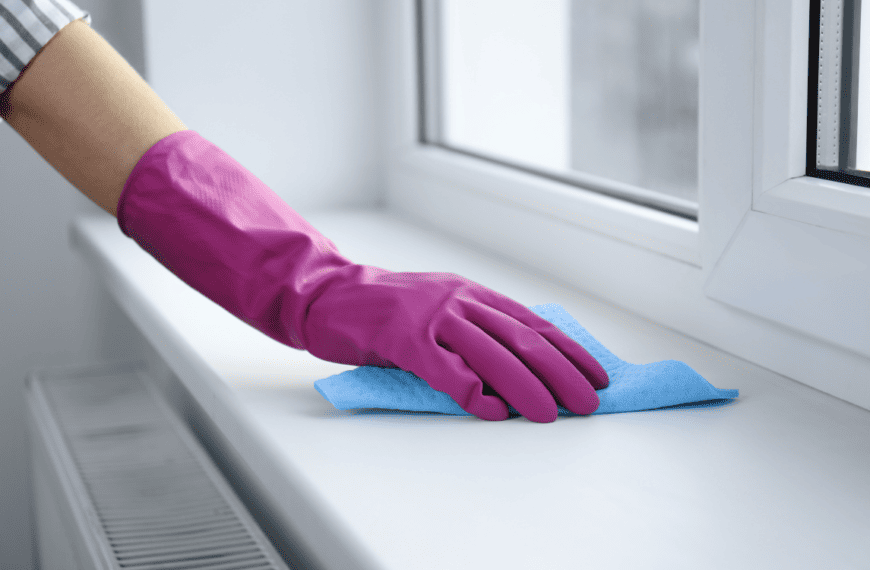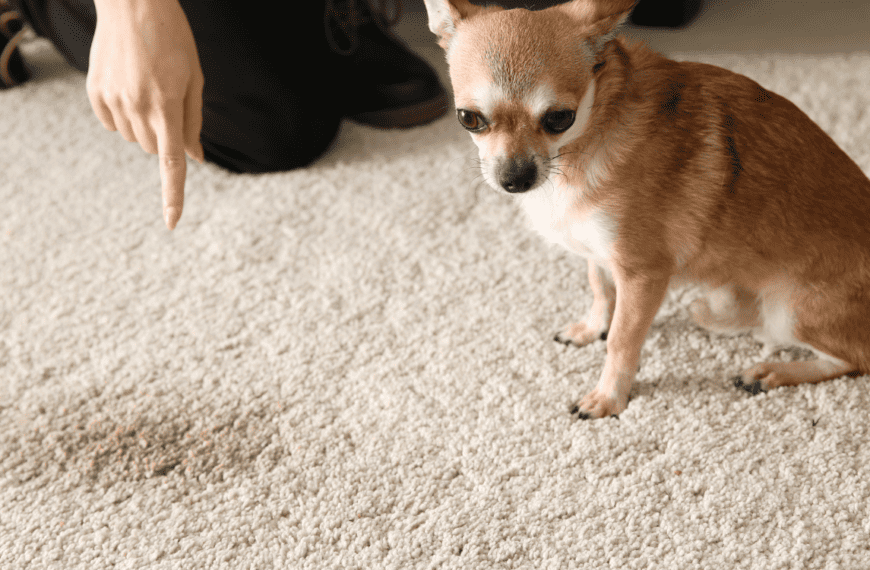I don’t typically latch onto trends, but I’ll occasionally subscribe if the hype has merit. A prime example came relatively recently when I bought my first pair of Hokas. The light, cushioned running shoes won me over immediately, and they’re currently one of my go-to pairs even when I’m just out doing errands.
While I bought them for comfort, an unexpected benefit has been the positive feedback. These things are attention grabbers! I got the most low-key black and white pair possible, but that still hasn’t stopped me from getting compliments whenever I go out.
The issue now is I know people are looking, so keeping them looking crisp has become a new priority. If you want to keep your shoes as fresh as the day you bought them, here are my top tips on how to clean Hokas in the safest and easiest way possible.
Before You Begin: Essential Cleaning Tips
- Remove laces and insoles before cleaning. Washing separate pieces improves results, saves time, and facilitates the cleaning process
- Use mild soap and warm or cold water. Harsh cleaners and hot water can degrade glues and other materials in shoes to wear them out faster
- Don’t use the dryer. Direct heat can warp, shrink, and separate shoe materials, causing irreparable damage
- Mind the material. Hokas vary in material designs, making it imperative to double-check your style’s care instructions
- Preserve your shoes. Keeping your Hokas clean and odor-free doesn’t have to be difficult and can save you tons of time cleaning
How To Clean Hokas
You can take your Hokas almost anywhere, but being rugged on the trail doesn’t mean they’re rugged in the wash. High heat, overly abrasive materials, and harsh alkaline cleaners can permanently damage shoes. To keep yours looking their best, use mild soap and water washes and follow up with more targeted stain cleaning.
Before washing, consider your shoe materials to gauge how you should clean them. Gore-Tex trail runners can withstand more aggressive cleaning than a suede set of Cliftons, and given the cost of some Hoka shoes, you don’t want to risk undue damage. Fortunately, the general process is similar, the only significant difference being how you apply your cleaner.
Top Recommendation: Dish Soap and Water
Mild dish liquid like blue Dawn in lukewarm water is the simplest, safest, and most efficient way to wash Hoka shoes. You can erase almost any blemish, from grass and dirt to grease to blood stains, by cleaning them promptly.
You may want to change the application depending on the material to prevent damage. If your Hoka running shoes have synthetic fabrics, like polyester, you can often soak them in soapy water. But suede and other untreated natural features do best with a spot-clean method to remove stains while protecting the delicate materials.
Tools and Materials
- Soft-bristled brush
- Mild dish liquid or detergent
- Lukewarm water
- Clean cloths or paper towels
- Newspaper (optional)
How To Clean Hoka Shoes With Dish Soap
- Remove the shoe laces and insoles, if possible, to wash separately
- Scrub away loose dirt and large chunks of debris with a dry, soft brush
- Mix a few drops of dish liquid with warm water in a bowl
- Dip a sponge, soft toothbrush, or soft bristle brush in the soapy mixture, and gently clean the shoes inside and out
- Rinse the shoes with cool water to remove all the soap, either by running them under a faucet or wiping them with a damp rag
- Blot all the shoe surfaces with a dry towel, stuff with newspaper, and leave to air dry completely
Drying Tip! Adding wads of newspaper helps your shoes dry faster and retain their shape. If you don’t have newspaper, you can get the same effect with a dry cloth or towel. Almost anything will work if it’s clean, moisture-wicking, and absorbent.
Replace the stuffing with fresh newspaper every 30–60 minutes. While you don’t want to apply heat, you can speed the drying process by setting your shoes near a fan, an open window, or a dehumidifier.
How To Clean Shoe Laces and Insoles
Run the laces through the washing machine with a laundry load while you clean your shoes. Keep them together by placing them in a sealable mesh bag. If mine are extra dirty, I’ll restore the crisp white by pre-soaking them in OxiClean for a few hours before running them through the wash.
To clean the insoles for your Hokas, hand wash them with soap and water. Air dry them separately and reinsert them when they and the shoes are 100% dry.
Commercial Cleaners
A commercial shoe cleaner is a versatile option for any dirty shoe, boasting a gentle solution that can clean anything from canvas and nubuck to synthetic materials.
A cleaning kit like the Reshoevn8r Shoe Cleaner Essential Kit or Jason Markk Shoe Cleaner Essentials gives you everything you need to keep your Hoka shoes clean. Alongside the cleaning solution, you receive a microfiber towel and three types of brushes (soft, medium, and firm bristle) to efficiently and safely clean every inch of your footwear.
Wet Wipes
Wet wipes are perfect for quick cleanups when you can’t give your Hoka shoes a full-blown wash. Disinfecting options like Lysol Disinfectant Wipes are often safe to use with care on synthetic materials. Baby wipes won’t kill germs, but they’re gentler on all Hoka shoe materials, including leather and suede, and effectively clean stains and excess dirt.
Can I Put Hokas in the Washing Machine and Dryer?
Countless people successfully clean Hokas in the washing machine, though there’s a greater chance of damage if you do it incorrectly. Hot water, agitation, and harsh detergents can cause significant wear. Nobody wants to replace their Hokas prematurely. But more importantly, you don’t want to risk an ankle-twisting blowout during your next jog.
How To Clean Hoka Shoes in the Washing Machine
To machine wash your Hoka shoes, choose a gentle cycle with cold water and a mild detergent. Protect your shoes by putting them in a mesh laundry bag. Balance the washing machine by including them in a load with other clothes.
Do not put your Hoka shoes in the dryer. Air-dry them away from heat sources in a well-ventilated area. Stuff them with absorbent material such as newspaper to remove excess water and maintain the shape. Place them near a fan, air vent, window, or dehumidifier to dry them faster.
Should You Clean Hoka Shoes in the Washer?
With a delicate cycle and detergents that don’t have harsh chemicals, the glue, fabric, rubber, and plastic tying the shoe together will be less prone to stress. Even so, I still recommend hand-washing Hoka shoes when possible. You have more control over the results, and it doesn’t take as much time as you think. It’s also the best way to extend your shoe’s life.
How to Deep Clean Challenging Stains
While I still recommend the simple hand wash process for deeply stained shoes, pre-treatment will be crucial for handling tough dirt and grime. Fortunately, several DIY and commercial approaches can work out stubborn spots before you give your Hokas a final wash.
Top Recommendation: OxiClean
OxiClean is a versatile solution for laundry and shoes you can apply in different ways depending on the material. It can remove dirt, grass, grease, and almost any other stubborn mark, all with color-safe bleaching action. If you’re having trouble getting stains out of your white shoes, OxiClean is your best bet to freshen the look before you give them a final wash.
Using Oxiclean for Synthetic Materials
For Hoka shoes made of synthetic materials, you can usually soak them in OxiClean before washing them. Mix one scoop of OxiClean per gallon of warm water in a basin. Use the warmest water your shoes allow to dissolve the powder. Let your Hokas soak for at least an hour before hand washing them.
OxiClean Spray for Leather and Suede Hoka Shoes
If your Hoka shoes have leather, suede, or other natural features, skip the soak and opt for a targeted OxiClean spray you can direct at the stains. Spray the cleaner on the dirty areas and let it sit for at least five minutes. Wash the shoe afterward to rinse the cleaner and whisk away any remaining stain.
Alternative Stain Cleaners
Many alternative laundry pre-treatments can work if you don’t have OxiClean or want another solution to spot-clean your Hoka shoes. The following are a few of my top recommendations:
- Fels-Naptha Laundry Bar: a heavy-duty stain remover in an easy-to-use bar. Wet a small brush or cloth, rub it on the bar to pick up some of the soap, and scrub the stain before rinsing with clean water
- Magic Eraser: melamine sponges can restore crisp white outsoles and midsoles that have deep dirt stains
- Shout Stain Remover: spray Shout on stains and let it sit for 1–5 minutes before washing
- Toothpaste: apply white toothpaste to the stain, and scrub gently with a small, soft brush (great for white shoes)
- Baking soda and water: make a thick baking soda paste and apply it to the stain for 30 minutes before scrubbing off
Tips for Cleaning Different Materials
How To Clean Mesh
Mesh material tolerates many chemical cleaners, but the thin weave can wear down from physical abuse. Don’t use firm brushes, and blot stains with a cloth instead of rubbing to prevent fraying.
How To Clean Suede or Nubuck
Suede and other unfinished leather products are vulnerable to permanent damage from excessive moisture. You can’t soak suede or other natural fabric Hokas, and you should only allow minor amounts of water when hand washing. To safely remove stains, blot your Hoka’s suede sections with a cloth dipped in rubbing alcohol.
How To Clean Leather
Hoka uses resilient, often waterproof leather in its running shoes, so cleaning them is relatively easy with the standard hand washing technique.
How To Clean Gore-Tex®
Gore-Tex is another durable material in Hoka’s rugged trail running and hiking shoes. You can wash them with the aforementioned cleaning methods, but remember to keep Gore-Tex away from high heat, as it could ruin the waterproof coating.
Tips and Tricks To Maintain Your Hokas
Cleaning is only one half of caring for your Hoka shoes. The other is maintenance. A few intelligent habits can go a long way in getting the most value from your footwear. Here are some essential tips to keep your Hokas in tip-top condition:
- Apply a water-repellent shoe spray. A protective shoe spray like Kiwi Select All Protector adds a waterproof seal that repels dirt, dust, and moisture to keep your Hokas clean
- Store your Hokas properly. Keep your Hoka shoes out of direct sunlight and in a dry, dust-free space to avoid damage and odors
- Rotate shoes. Keep two or more pairs of running shoes to swap out, allowing each to dry fully between uses
Did You Know? Science has shown how shoes capture dangerous contaminants. One study found shoe bottoms contained more Clostridium difficile, an infectious diarrhea-causing bacteria, than toilets and other bathroom surfaces. Taking shoes off at the door is essential in preventing illness and managing household health.
Why You Should Care For Your Hokas
Keeping your Hoka shoes clean is a vital aspect of making them last. While the materials are high-quality, abrasive debris and caked-on dirt can cause ongoing wear that reduces your shoe’s lifespan.
Regular cleaning removes the damaging visible dirt and grime and eliminates harmful microbes we can’t see. Shoes are invariably filthy, a fact one study supported by finding 96% of footwear carry Coliform bacteria found in fecal matter. The same research showed washing shoes can remove up to 99% of those bacteria on the outside surface and 90% on the inside, revealing the value of clean footwear beyond making you look good.
Frequently Asked Questions (FAQ)
Are There Any Cleaning Products I Should Avoid?
Bleach and other harsh chemicals may work in a pinch, but the potential for damage is too great for them to be practical as a first option to clean your Hokas. They can permanently discolor your shoes and deteriorate the material strength, making them wear faster.
How Can I Tackle Persistent Odors in My Hokas?
Keeping your shoes dry takes away the ideal environment odor-causing bacteria need to make them smell. Airing shoes out and proper storage are crucial. But you can also apply odor and moisture-absorbing products, like baking soda or activated charcoal pouches, to guarantee freshness between uses. Check out our two very popular articles on best shoe deodorizers and effective fixes for smelly shoes for a complete list of easy and effective odor-eliminating options.
How Often Should I Apply Protective Spray to My Hokas?
Apply weather-proofing protective spray before their first use and every 2–4 weeks afterward. Use two coats, letting the first dry before applying the second. To check if your shoes are ready for a new application, drop some water on them to see if it beads on top or absorbs into the fabric.
How To Ensure the Cushioning Quality of Hokas Remains Intact?
The best way to keep your Hoka shoes soft and supportive for as long as possible is to avoid harsh cleaners and high heat. One trip through the dryer can soften and crack the soles, causing discomfort and possible injury while running. Damage like this is difficult, if not impossible, to overcome, and you may have to ditch your favorite shoes for a new pair.









